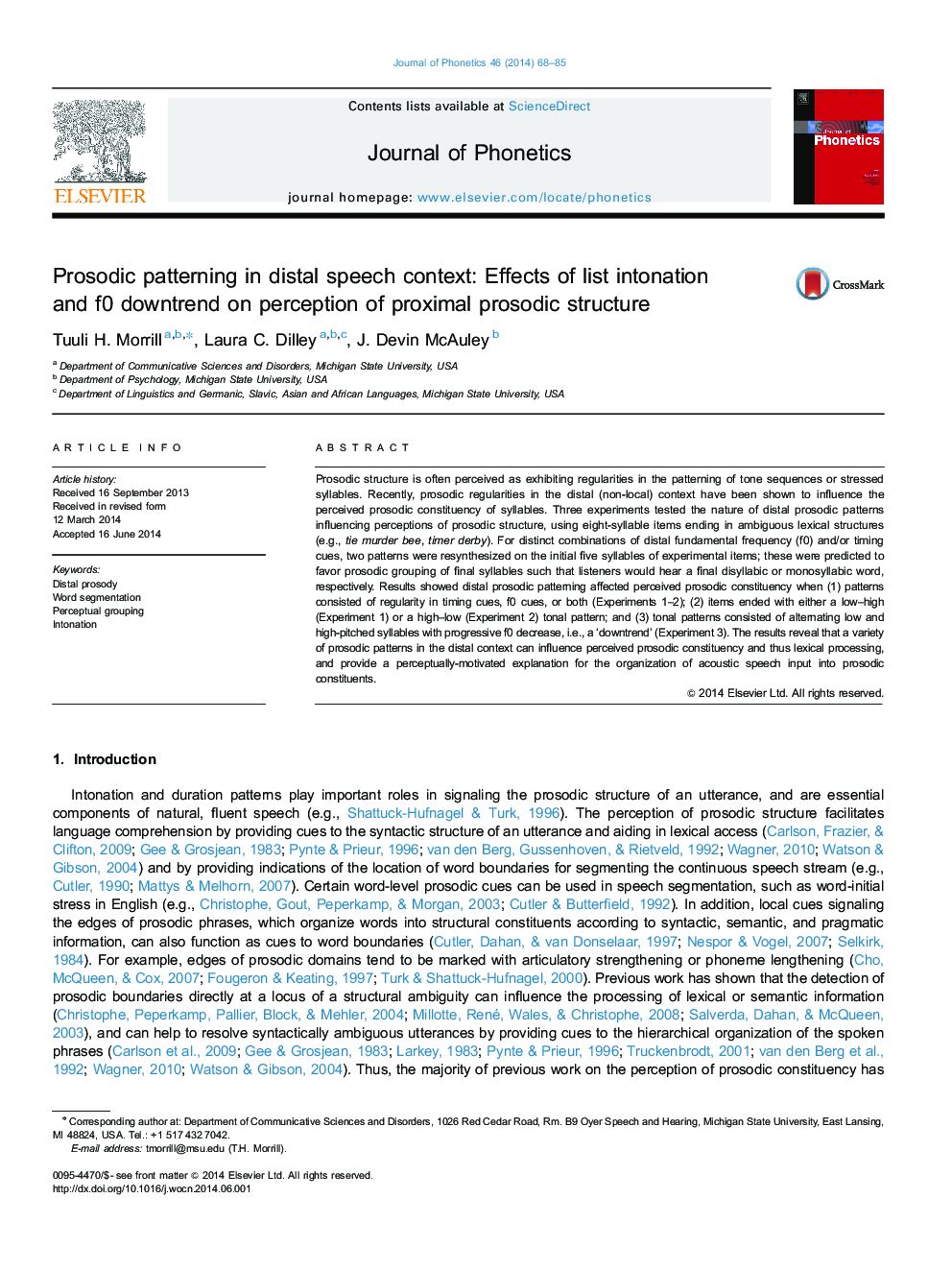| Article ID | Journal | Published Year | Pages | File Type |
|---|---|---|---|---|
| 7532957 | Journal of Phonetics | 2014 | 18 Pages |
Abstract
Prosodic structure is often perceived as exhibiting regularities in the patterning of tone sequences or stressed syllables. Recently, prosodic regularities in the distal (non-local) context have been shown to influence the perceived prosodic constituency of syllables. Three experiments tested the nature of distal prosodic patterns influencing perceptions of prosodic structure, using eight-syllable items ending in ambiguous lexical structures (e.g., tie murder bee, timer derby). For distinct combinations of distal fundamental frequency (f0) and/or timing cues, two patterns were resynthesized on the initial five syllables of experimental items; these were predicted to favor prosodic grouping of final syllables such that listeners would hear a final disyllabic or monosyllabic word, respectively. Results showed distal prosodic patterning affected perceived prosodic constituency when (1) patterns consisted of regularity in timing cues, f0 cues, or both (Experiments 1-2); (2) items ended with either a low-high (Experiment 1) or a high-low (Experiment 2) tonal pattern; and (3) tonal patterns consisted of alternating low and high-pitched syllables with progressive f0 decrease, i.e., a 'downtrend' (Experiment 3). The results reveal that a variety of prosodic patterns in the distal context can influence perceived prosodic constituency and thus lexical processing, and provide a perceptually-motivated explanation for the organization of acoustic speech input into prosodic constituents.
Related Topics
Social Sciences and Humanities
Arts and Humanities
Language and Linguistics
Authors
Tuuli H. Morrill, Laura C. Dilley, J. Devin McAuley,
